Does quality of life suffer after having a heart stent?
How will life be affected by having a heart stent? Understanding Heart Stent Surgery
Cardiac stent is one of the effective means of treating coronary heart disease, but the people have different views on stents, some people are doubtful, some people are afraid, and some people even reject the stent, thinking that the stent will be invalid, thinking that as long as the stent is put in the heart, the person will not be able to do anything, and can not work, and even the daily life has been affected, so how is the actual situation?
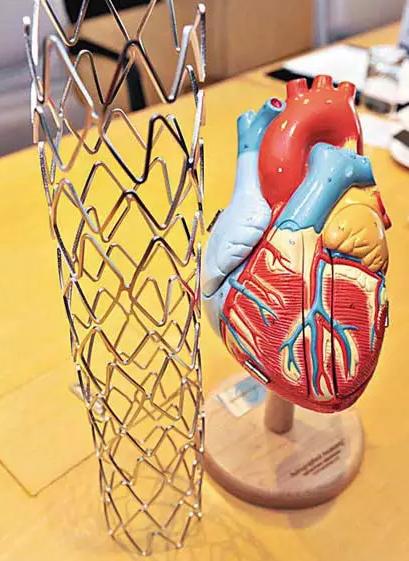
Cardiac stent surgery has become one of the most popular therapies for treating coronary heart disease myocardial ischemia in China at present because of its shorter operation time and quicker postoperative recovery. However, how much do people know about stent surgery?
What is a cardiac stent?
A cardiac stent, also known as a coronary stent, is a device used in the PTCA (percutaneous transluminal coronary angioplasty) procedure. Cardiac stents look like tiny mesh-walled metal tubes outside of the body, consisting of wires and microcapsules at the front of the wires, etc. Small stents weigh even less than one ten-thousandth of a gram. Arterial stents can continuously play a role in supporting arteries, resolving stenosis, and ensuring smooth blood flow. They are generally used in the treatment of acute myocardial infarction and other acute coronary syndromes to save the patient's life or improve the quality of life.
How is cardiac stenting performed?
Cardiac stent surgery is first from the person's arm or leg artery to open a small opening, connected to the line inserted a probe, which is loaded with a just like a small bullet, through ultrasound observation of the small bullet to reach the coronary artery blood vessels in the location of the blockage after the bullet to open the bullet, which is an umbrella of iron, all of a sudden the blood vessels to support the blood vessels, so that the blood vessels are temporarily propped up so that the blood can come over.
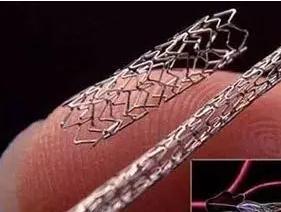
What kind of patients are not candidates for cardiac stenting?
1. Patients with mild stenosis of the coronary arteries, stenosis that does not affect blood flow significantly, or some small branch vascular lesions that are not too important, are usually treated with medication only, and then followed up regularly for observation. If a stent is implanted at this time, it may cause more harm than good.
2. Patients with coronary artery disease who also have structural changes in the heart (e.g., combined valvular disease, significant ventricular wall tumor after myocardial infarction, etc.) should prefer surgical treatment to completely resolve these problems.
3. Certain parts of the blood vessels are very risky for interventional therapy, while surgery is relatively less risky, and surgical treatment should also be chosen in this case.
What are the types of cardiac stents?
1, blank stent (bare metal stent): the stent is a foreign body to the human body, the human body will "attack" it, the endothelial cell hyperplasia and inflammatory reaction, which can cause the stenosis and blockage of the smooth blood vessels again. The incidence of restenosis and blockage of blank stent is as high as 30%, and it has been used gradually.
2、Drug stent: In order to prevent further blockage after putting a heart stent, a drug film is coated on the surface of the metal stent, which is a drug stent. After this kind of stent is implanted in the body, the drug will be released slowly to inhibit the growth of scar tissue around the stent and keep the coronary artery open. It reduces the incidence of coronary artery restenosis and blockage to 10%.
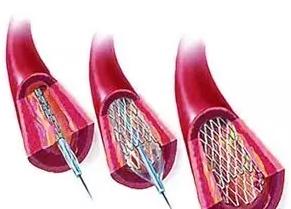
Does putting the stent in make it permanent?
As long as there are no blood clots or restenosis within the stent, it can remain with the patient for life.
In-stent thrombosis is defined as: Larger blood clots form in a short period of time, leading to an acute blockage of the blood vessel. This clot can occur in a vessel that has not had a stent placed in it, or it can occur within the stent. Once it occurs, it basically leads to myocardial infarction and even sudden death.
This high incidence of in-stent thrombosis is: up to 1 year after stenting, and its incidence is about 1%. Therefore, after a patient has a stent, on top of continuing to take aspirin, the doctor will add a medication called clopidogrel (currently most use clopidogrel, and a small number of patients may use prasugrel or tegretol). This clopidogrel is to prevent in-stent thrombosis, which inhibits platelet aggregation and does not allow clots to form.
After 1 year of stent placement, the clopidogrel is usually stopped, but the aspirin is continued. Thereafter, the annual incidence of in-stent thrombosis is approximately 0.5%. Therefore, if a patient is able to tolerate the drug combination 1 year after the procedure and is at high risk for thrombosis, some physicians recommend that the patient continue this dual drug therapy to minimize the incidence of in-stent thrombosis.
If you stop taking clopidogrel on your own, the risk of in-stent thrombosis is greatly increased, with some reports suggesting it may increase dozens of times. Therefore, it is important to follow your doctor's instructions for medication after stent placement.

In-stent restenosis is the: Over a longer period of time (usually months or even years), the blood vessel where the stent was placed slowly becomes blocked again. Because this process is very slow, it usually does not lead to a heart attack, and the most common symptom is angina pectoris.
Current data are that the overall 5-year incidence of in-stent restenosis is about 10% or so.
There are many factors that influence in-stent restenosis, including approximately 3 categories:
1. Stent factors: In general, the incidence of second-generation drug stents is somewhat lower than that of first-generation drug stents.
2, lesion factors: if the stent site of the blood vessels are bifurcated, thin, very long, curved, etc., it is more likely to appear restenosis.
3, patient factors: after the stent, if the patient's blood pressure, blood sugar, blood fat is not well controlled, and continue to smoke, will increase the incidence of restenosis.
Surgery mainly plays a role in relieving symptoms and stabilizing the condition, and to achieve good results, post-operative care should not be ignored. In addition to adhere to the medication, more rest after surgery, you can appropriate exercise such as walking, but can not be strenuous exercise; scientific arrangement of diet, to ensure that the intake of the right amount of fruits and vegetables and low-fat, high-protein foods; a small amount of alcohol, preferably no alcohol, the need to socialize with people who can not be more than 50 milliliters per day, smoking is strictly prohibited; postoperative still need to be regularly rechecked physical examination, in order to facilitate the doctor to carry out timely treatment.
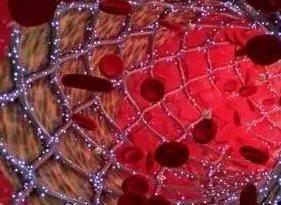
Why do I still have chest tightness after heart stent surgery?
Some people still have chest tightness after stent surgery, mainly because of the irreversible nature of myocardial necrosis. Dr. Zhu Zhenzhong said, "Once the myocardium is ischemic, it is counted by minutes, a few minutes will be part of the necrosis. Once more than 12 hours, the blockage range of the myocardium is basically dead, will not contract, will not move. It's like a rice paddy that dries up and the rice is dead. That's when the water comes in, but the dead rice is still dead."
Do the mounts fall out?
There is a risk of the stent falling out during placement, mainly due to the curvature of the vessel and severe calcification. After the stent has been successfully placed in the body, the stent fits snugly against the vessel wall and will not fall out. The stent will not come off even if you are active, or if you perform external cardiac compressions or defibrillation.
Can I get an MRI after stent surgery?
MRIs should not be performed for at least 8 weeks after placement of a stainless steel stent. The newer cobalt chromium stents do not have this restriction, and the surgeon should be consulted for details.
In fact, a high intensity magnetic field is generated during the MRI, which may have an effect on metallic implants, such as stent displacement, burns on blood vessels, etc. However, with the advancement of technology, generally speaking, 1.5T MRI has little effect on the mainstream stents in the market nowadays. However, with the advancement of technology and improvement of stent material, generally speaking, 1.5T MRI has little effect on the mainstream stents in the market.
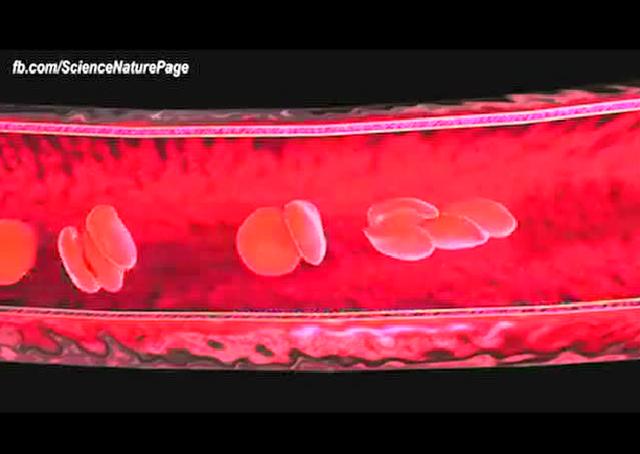
Can I live a normal life after stent surgery?
Cardiac stent is one of the effective means of treating coronary heart disease, but the people have different views on stent, some people are doubtful, some people are afraid, and some people even reject the stent, thinking that the stent will be invalid, thinking that as long as the stent is put in the heart, the person will not be able to do anything, and cannot work, and even the daily life has been affected, in fact, this is an extremely wrong concept.
Beijing 301 hospital cardiovascular internal medicine deputy chief physician Wang Qi said, the heart put a stent, the blockage of the coronary artery blood vessels to re-open, restored the normal blood supply, whether it is stable angina pectoris or unstable angina pectoris, the patient's symptoms can be significantly improved, as long as there is no myocardial infarction of a wide range of heart function is normal patients can be free to move around and return to normal people's lives.
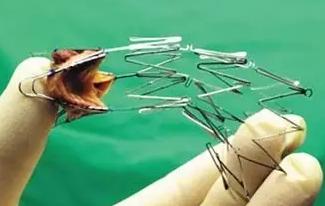
What do I need to be aware of after stent surgery?
1, regular medication: this is the most important key factor after stenting. Stent as a metal foreign body, placed into the blood vessel has the risk of thrombosis, so 1 year after stenting (the current Chinese expert consensus), the double antiplatelet drugs (aspirin and clopidogrel or Tegretol) can never be privately suspended.
2、Regular review: Regular review after stenting is very important. How your body reacts to the stent and whether there are side effects of long-term oral medication can be diagnosed early and adjusted accurately during the follow-up visits.
Avoiding risk factors: Coronary heart disease is a kind of atherosclerotic disease, which is a systemic disease, and stenting only deals with lesions with coronary stenosis of more than 70%, and there are many other sclerotic lesions, so avoiding atherosclerotic risk factors after stenting is particularly important. There is such a patient, after a stent was put in the heart, the chest pain symptoms improved significantly, but after going home, he still smoked, stayed up late, lack of exercise and other bad lifestyle, then the symptoms recurred for the next 3 years, and then continuously made up 2 stents, so the stent is only the symptomatic treatment, and avoidance of risk factors is the root cause of the disease!
By strictly doing the above three points, the stent will be able to last a lifetime, and you will be able to resume your life as a normal person.
For patients with coronary heart disease, implantation of cardiac stents and opening of narrow blood vessels can effectively relieve the ischemic and hypoxic state of the heart, improve the symptoms of angina pectoris, and improve the quality of life of patients with coronary heart disease. It requires the same adherence to medication as patients with coronary artery disease who do not have a stent implanted, but reduces the risk of serious cardiovascular events. Intravascular stents do not have much impact on daily life, and patients can travel, exercise and work as tolerably as possible.
Some patients worry that the use of cell phones or some electromagnetic radiation will have an impact on the stent, causing thrombus formation or heat generation in the stent, poor adherence to the wall, dislocation, etc. In fact, there is no need to have these concerns, the stent currently in use is made of stainless steel, nickel, titanium, titanium alloy, nickel-titanium alloy, platinum and other components, which is a non-magnetic material, and it is securely bonded to blood vessels through the growth of the tissue endothelium in about 6 to 8 weeks after implantation. Therefore, the magnetic field environment will not affect the stent, so there is no need to be afraid to use cell phones or other electrical products for fear, and even MRI can be done.
For patients with coronary heart disease who have implanted cardiac stents, the factors to pay attention to in their lives are mainly for the prevention and treatment of coronary heart disease, including low-salt and low-fat diets, quitting smoking and limiting alcohol consumption, appropriate exercise, paying attention to rest and maintaining a calm mind. There is no need for implantation of stents to bring too much trouble to oneself and produce psychological burden, thus affecting normal life. Patients with stent implantation can enjoy life as normal people do when their coronary heart disease is under good control, and the quality of their daily life will not be lowered, but on the contrary, it will be very well improved. However, it is still necessary to evaluate the condition, patient benefit and long-term prognosis for stent implantation, and should not blindly reject the stent implantation treatment, nor should the therapeutic role of stents be mythologized.
The authoritative interpretation of Pharmaceutical Affairs, unauthorized reproduction, plagiarism will be punished.
Does quality of life suffer after having a heart stent? This is a good question, and it's a question that is asked on behalf of millions of patients who have had stents and are about to have stents, and it raises a lot of heartfelt questions. In fact, this question is one of the most frequently asked questions I get in the clinic.
This question has to be divided into two parts. If the patient who has a cardiac stent is hospitalized because of an acute myocardial infarction, then the quality of life is likely to be affected even after the implantation of the stent. If the patient is hospitalized for an acute myocardial infarction before the angina stage, then the patient's quality of life is unlikely to be affected. Why is this so? Let's hear it in detail.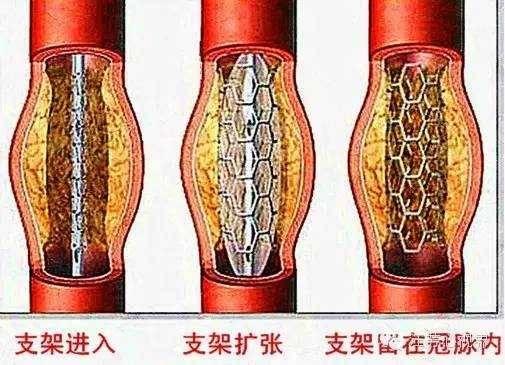
The first scenario is when a patient is admitted to the hospital for an acute myocardial infarction. In this case, it is very likely that the patient's cardiac function is impaired after the myocardial infarction. If a person has impaired cardiac function, some of the injuries are difficult to heal for life, and most of the cases of impaired cardiac function can only be achieved without deterioration of the cardiac function, and it is not very practical to fully recover to the time when the myocardial infarction did not occur before. However, for a small number of patients with myocardial infarction, due to early treatment, cardiac function is not significantly impaired, which also exists, but this situation is not much. Once the heart function is impaired even after cardiac stenting, the patient's quality of life may be affected after the operation, which is also very common in the clinic. This is also the reason why people call myocardial infarction "either death or injury".
The second situation is that the patient has a cardiac stent when he is in the angina stage, that is, the heart has solved the specific problem before myocardial infarction occurs. In most cases, the heart function is not impaired, and after implantation of the stent, the patient's life will be fine as long as he/she takes medication on time and undergoes regular checkups, which will not affect the quality of life too much. Of course, there are a few patients who have impaired cardiac function during the angina stage for various reasons, especially diastolic function, which may also affect the quality of life in the later stage, and this situation also exists, but it is not many.
Regardless of the type of patient who has a cardiac stent, they should stay on their medication, have regular reviews, and follow up with their doctor if they have any conditions.
For more health information, please follow Dr. Zhang Zhiying's headline number.
Thanks for the invite! A lot of experts have already done a great job answering this. This is really a great concern for patients and families.
I think this question needs to be individualized and is specific to the patient's condition and the status of the stent placement. In addition, the effects of stenting are not the same, there are short-term postoperative effects as well as long-term effects.
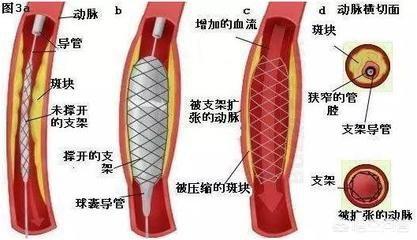
Consider theseconsiderations会Impact on quality of life after cardiac (coronary) stenting。
1.Condition at the time of coronary stent implantation. If coronary stent implantation occurs before a myocardial infarction has occurred, the improvement in quality of life is greatly beneficial. However, if an acute infarction has already occurred, even if stenting saves a life, the benefit is diminished. This is because the infarcted myocardium does not regenerate, the infarcted myocardium loses its contractile function, and the structure of the heart undergoes remodeling, which can have an impact on cardiac function. So.Quality of life after stenting is closely related to myocardial blood supply status and cardiac function,Antiventricular remodeling and cardioprotective therapy must be observed after stent implantation in patients with heart attack(Prilosec or sartans, beta blockers, etc.).
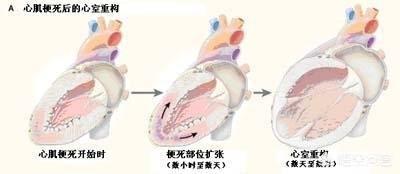
2.Improvement in overall coronary lesions with stent placement. We say that stenting is a method of coronary revascularization. If the patient has a single lesion in a single vessel, stenting will result in complete reestablishment of blood flow and improvement of the overall myocardial blood supply, and of course, the long-term quality of life will be improved. However, if the patient has multiple vessels with multiple lesions, the implantation of a coronary stent only solves the localized problem and has limited improvement in the overall blood supply to the myocardium, and the improvement in the quality of life will also be limited.
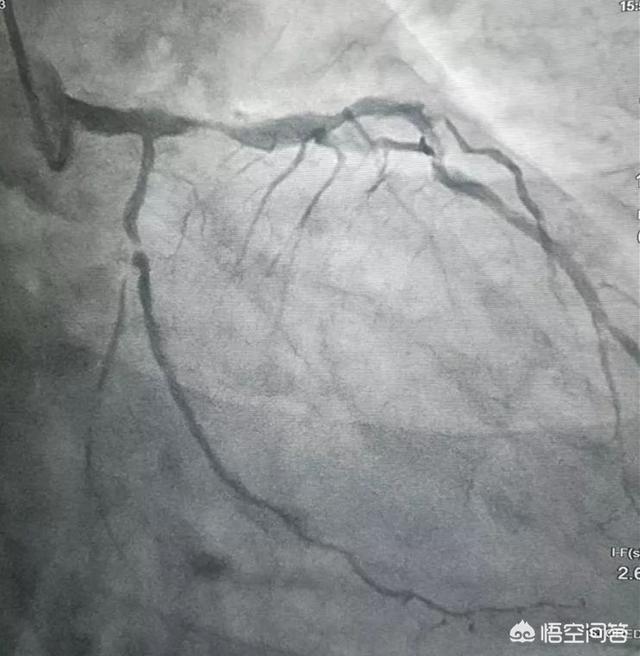
3.Completion of stent implantation techniques. The human body is complex, and coronary lesions are even more complex. In coronary stenting, a number of conditions can limit and affect the stenting technique, resulting in a less than optimal, less than ideal stent placement. These technical deficiencies can also affect the outcome of coronary stenting.
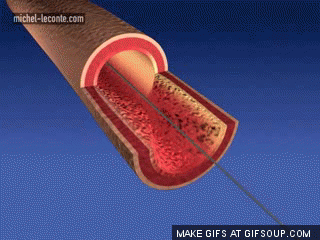
4.Management, comprehensive treatment after coronary stenting. Coronary stenting is only a mechanical method to open the coronary arteries, can not solve the development of coronary atherosclerosis, long-term control needs anti-atherosclerosis (cholesterol-lowering, anti-platelet) treatment, control, treatment of various risk factors and related diseases, if these problems are not solved, stenting efficacy can not be consolidated to maintain the quality of life will also be due to the coronary atherosclerosis occurs again stenosis, re-obstruction caused by myocardial ischemia and affected. blockage resulting in myocardial ischemia due to coronary atherosclerosis. ThereforeLong-term medication and lifestyle interventions to be maintained after coronary stenting。

5.Patient response to post-stentingIntensive anti-platelet, etc.Tolerance of treatment. For example, intensive (dual) antiplatelet therapy is required after coronary stenting because of the susceptibility to thrombosis. But the antithesis of antithrombotic therapy is bleeding. If a patient after coronary stenting tolerates dual (aspirin + clopidogrel or tegretol) antiplatelet therapy well and transitions to single-agent antiplatelet therapy, that's great, of course; but if it's not well tolerated, or if there are bleeding complications, it can have an impact on quality of life. Other drug therapies are also responded to and tolerated.
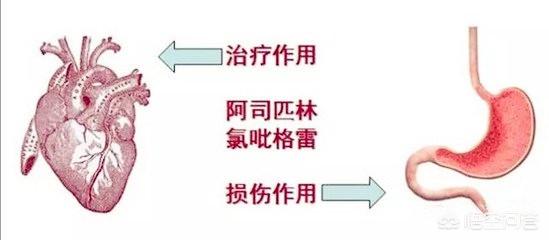
(Image from the Internet)
Stent this thing is indeed convenient, fast and safe, but why the foreign vascular stent will be less and less to do, lies in the postoperative problems, must take anticoagulant drugs, thrombus re-formation, the rejection of foreign bodies will appear this and that kind of problem, in the first few years of foreign countries are more artificial blood vessel replacement, and later simply use autologous blood vessel transplantation, of course, the latter way on the technology, the coordination of the requirements of the higher, the cost is not low, can carry out not many hospitals, and also not many hospitals. Of course, the latter method requires more technology and cooperation, and the cost is not low, so there are not many hospitals that can carry out.
There is no effect for the time being, but you have to change the previous bad habits, just put the stent, the body back to normal, so some people think it's okay, smoking, drinking, staying up all night, overeating, it won't take three years, the blood vessels will still be blocked, angina pectoris, infarcts will soon occur. So after the stent is put in, you have to take your medication on time 💊, quit smoking and drinking, eat small meals, low fat and low oil. The amount of exercise. Only then can you slowly have a good body.
Nowadays, cardiovascular diseases such as coronary heart disease and heart attack are becoming more and more common. For these diseases, medication is one aspect, while some patients inevitably have to undergo cardiac stent surgery. In recent years, heart attack is getting younger and younger, which makes many young patients have stents installed. And many people are skeptical about stent surgery.
Does quality of life suffer after having a heart stent?
Whether or not cardiac stent surgery will affect the quality of life is a concern for many patients. These patients always feel that an additional stent in the heart is equivalent to a "time bomb" and is very unsafe, which is why many patients refuse to undergo stent surgery. Some patients even delayed the stent surgery because they did not believe in the safety of the stent surgery, and eventually put their lives on the line. When faced with a disease like heart attack, doctors don't have much time to explain. Today, we are going to do stenting justice again.
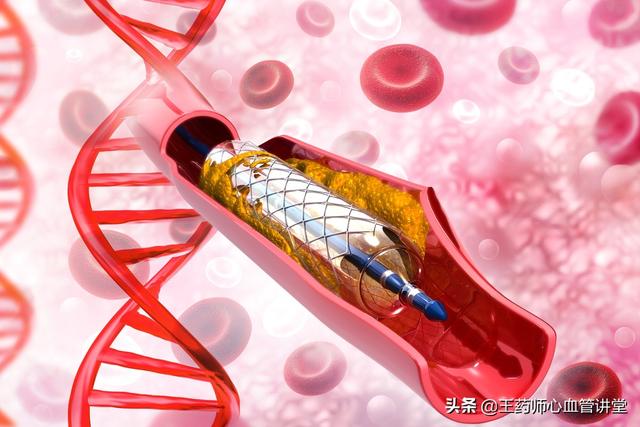
First, what are the effects of having a heart stent procedure.
To be honest, it's impossible to say that having an extra stent in your heart doesn't have any effect. At the very least, putting in a stent indicates that you have a cardiovascular problem, and it's a major problem that is irreversible. It is irreversible because many of the causes of cardiovascular blockages are due to the formation of atherosclerotic plaque in the coronary arteries, which cannot be reversed. Even if you have stenting surgery to temporarily open up a blocked blood vessel, there is still the possibility that the blood vessel will be blocked again. As the saying goes, if there is a first time, there is a second time, because the cause of the blockage is always there and cannot be eliminated.
So, having a heart stent surgery means that your life can't be as indulgent as it used to be. You have to know what to do and what not to do, and this is actually an enhancement to your quality of life for the better.
If you used to smoke and drink for a long time and it was hard for you to quit, maybe a stent surgery made you wake up and realize the importance of your health, and then make up your mind to quit smoking and drinking. If you used to have no qualms about eating and drinking, maybe a stent surgery will make you restrain yourself, realize that you can't eat those high oil, high salt and high sugar foods any more, and then deliberately stay away from them. If you used to dislike exercise and like to stay up late, maybe a stent surgery will help you develop the good habit of going to bed early and waking up early to keep exercising. If you used to be obese and had no way to lose weight, maybe a stent surgery can make you determined to lose weight and successfully slim down.
These are the positive effects that heart stent surgery can have on your life. The reason for this is that you realize the importance of your health through a stent procedure and then resolve to improve your life. Of course, if you take these as negative impacts and feel that you can't smoke or drink, stay up late or eat happily after having a stent procedure, and then feel that it makes your quality of life go down, that's a matter of your personal realization.

Secondly, there are issues that you have to really face up to after having a heart stent procedure.
It is undeniable that for some patients, stenting does bring about some negative effects on their quality of life. For example, some young people are thus plunged into endless pain, feeling that they cannot live well in the future, and then they live decadently, being depressed and negative and pessimistic all day long, and even giving up on life and hope, which is definitely negative. In the end, it is a matter of personal attitude.
The real issue that needs to be addressed squarely for patients after cardiac stent surgery is actually the problem of recurrence after stent surgery. If the patient does it right, the procedure will result in an improvement in angina symptoms, which is a good influence. Those patients who are affected by stenting are usually affected by in-stent restenosis or thrombus re-formation due to inattention to subsequent medication and life interventions, which then leads to a return of angina, chest tightness, and consequent inability to live a normal life. As for patients' concerns about misalignment, displacement and dislocation of the stent within the heart, they absolutely do not exist. These patients need not worry.
In conclusion, cardiac stenting, if done properly, is not a big problem and can only have a positive impact on the patient's subsequent life, not only helping to cure the disease and alleviate symptoms such as angina, but also helping to improve lifestyle and living a healthier life.
I am Pharmacist Wang, dedicated to helping you manage your body by explaining complex and difficult disease knowledge in plain words. Your praise is my greatest motivation! In addition, if your family members also have related troubles, please forward this article to them!
Dr. Wang, what will I do after the stent!
This is a concern for almost all post-stenting patients, and we understand the concern very well because it is, after all, a foreign body.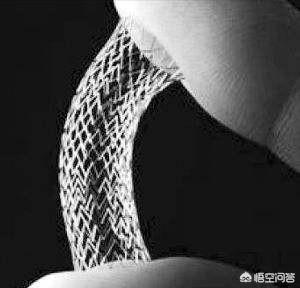
But there is actually no direct relationship between stents and and quality of life. Even to some extent, cardiac stents improve quality of life. Dr. Wang is not pushing stents, is he?
You can read it before you curse!
The main adaptive population of cardiac stent is angina that cannot be controlled by medication, what does it mean, coronary heart disease angina, the medicine ate a lot, but it is the symptom that cannot be controlled, recurrent angina, how do you say this quality of life? The stent successfully solved this part of the population of myocardial ischemia, the symptoms can be effectively controlled every day and then not for angina pain, not for myocardial infarction worry, you say is not to improve the quality of life!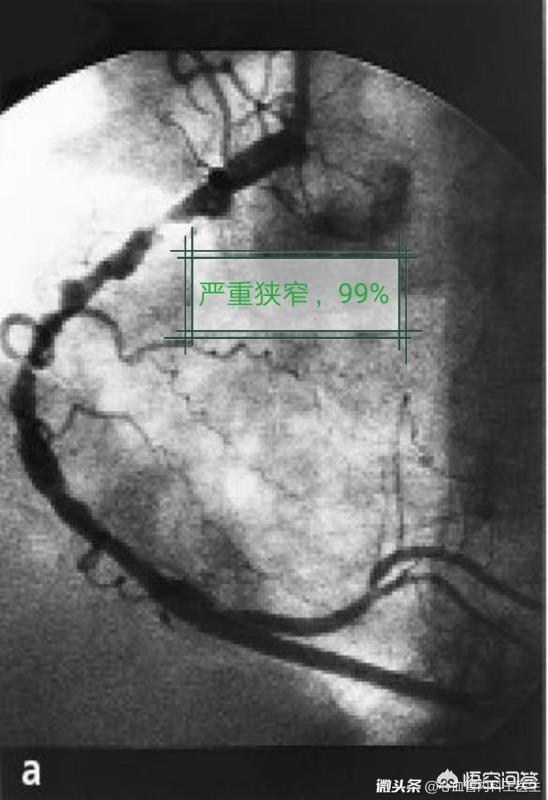
For patients with acute myocardial infarction requiring stents, it can be more than just improving quality of life, it can be saving lives!
If we're going to talk about how life-changing the stent has been, let's just nitpick a few things.
1. After stenting, you need to take clopidogrel or tegretol for one year.
2. There is a risk of in-stent thrombosis after stenting.
3, Increased risk of bleeding after stenting due to taking dual antiplatelet drugs.
But it was because of the disease that the stent had to be put in, is there another way to do it without the stent? If there is please refer people to it, but no scammers, scammers leave a comment and I'll send alpacas!
So far, cardiac stents do not directly bring about a decrease in the quality of life of the patient, because we need to take long-term medication when we have coronary artery disease, because for this part of the lesion not stenting can not solve the pain, and not stenting may lose their lives!
So, you should still put the bracket in, but you should never put it in, because if you put it in even if you shouldn't, it's even more of an alpaca sender!
There are many factors affecting this, one is the personal character, some people are born more optimistic, according to the medical requirements of the medication, active sports, a little discomfort will not be put on the mind, have their own hobbies and interests, as usual, play in the mountains, and the second is to look at the physical situation, there are people put the stent 48 hours to go to work. Be optimistic!
I. One of the purposes of cardiac stents is to improve quality of life!
One of the important purposes of cardiac stenting is to improve the quality of life, such as unstable angina that recurs and doesn't improve with medication, we do stenting to improve the angina and keep it from recurring! So, the purpose of stent implantation is to improve quality of life! If the quality of life does not improve after stent implantation, but worsens instead, then what is the point of implanting a stent!
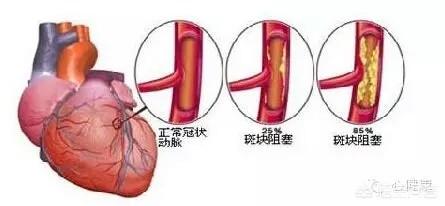
Second, will the quality of life be affected after heart implantation?
Our aim is to improve the quality of life, but the uncertainty of medicine determines that there are still people whose quality of life does not improve after stent implantation! Then most of these patients have the following conditions! 1. Still have angina attacks after the procedure; 2. No improvement in cardiac function after the procedure; 3. Combination of other complications after the procedure; 4. Neurosis after the procedure! If these situations occur, then it may still affect our daily life!
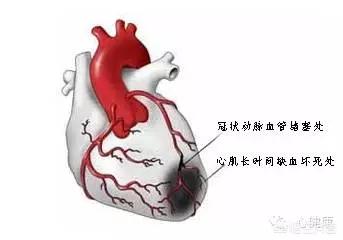
Third, should I put a stent in if I have no symptoms?
If there are no symptoms, then why go for an angiogram? In fact, the classification of coronary artery disease does include a classification for asymptomatic coronary artery disease! But if there are no symptoms, and there is no cardiac function affected, and there is no severe large vessel stenosis, the guidelines do not recommend stent implantation for treatment! So, symptoms, and definite myocardial ischemia resulting in symptoms, is an important criterion for stent implantation!

Fourth, rationalizing the bracket is the right way to open it!
Stents need to be rationally viewed, there are generally two extremes, one extreme that the stent ten evils, should not be put stents, this idea completely negate the effectiveness of the stent, such a person sooner or later will also be harmed by this! The other extreme thinks that there is no cure for coronary heart disease if stents are not put in, which is also an extreme, such people will eventually live in the shadow of coronary heart disease, the quality of life will not be very good, every day in fear ......
So, do you guys think stent implantation will affect quality of life?
This question and answer are from the site users, does not represent the position of the site, such as infringement, please contact the administrator to delete.